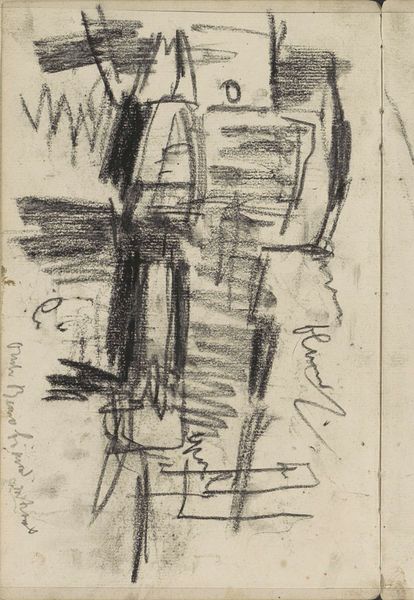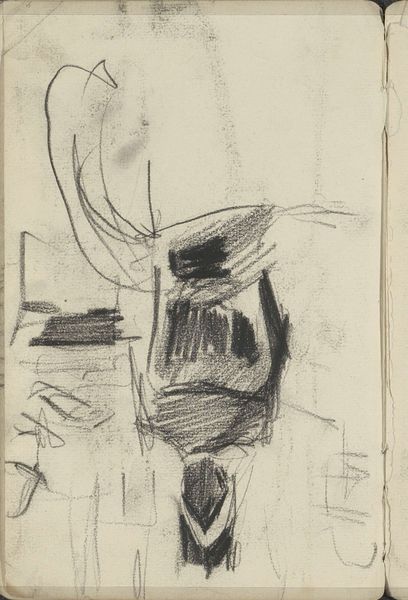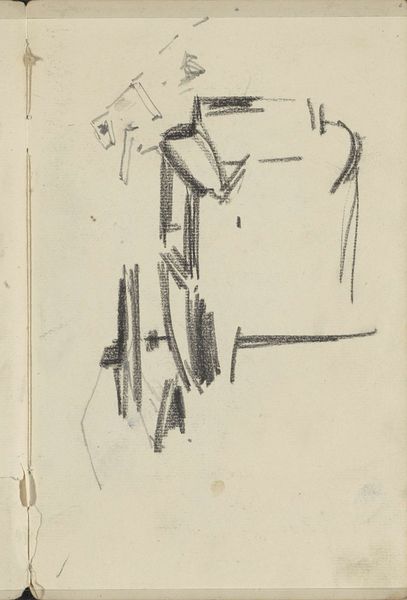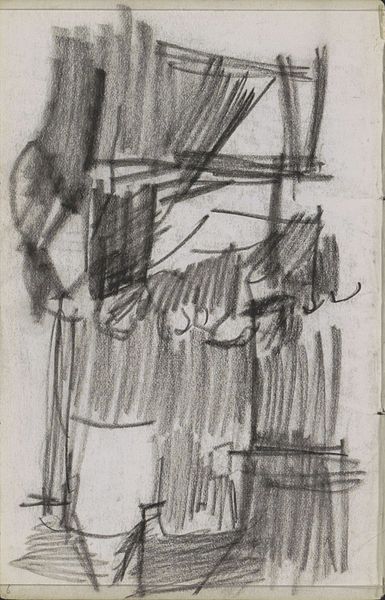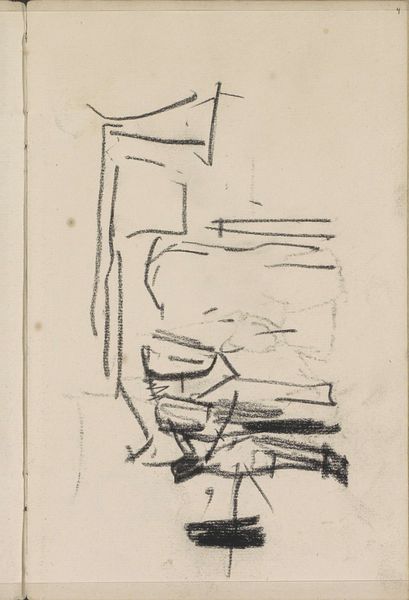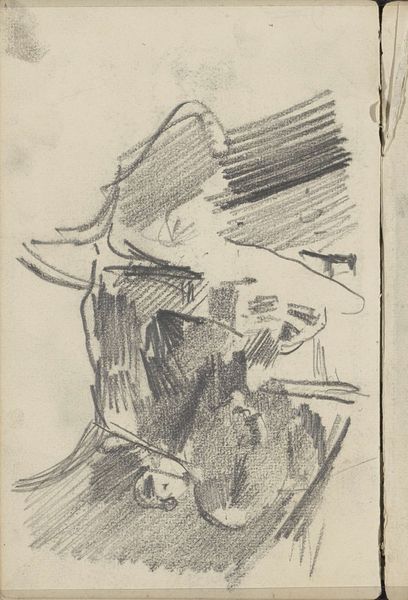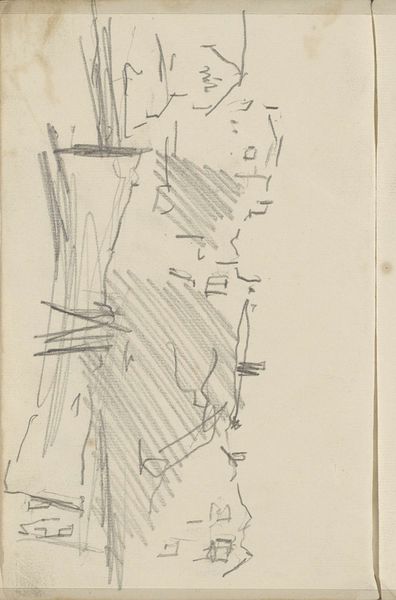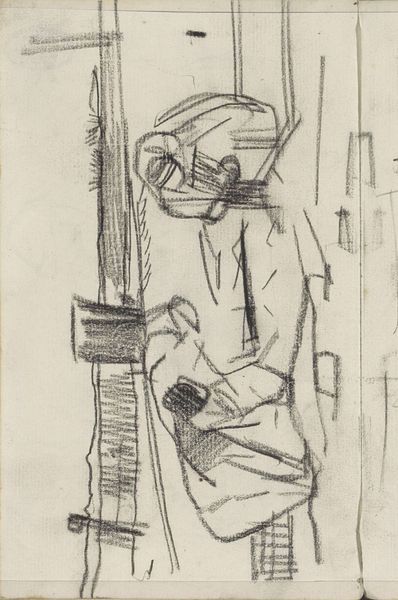
Copyright: Rijks Museum: Open Domain
Editor: Here we have Isaac Israels' "Dienstmeid op straat," made sometime between 1886 and 1903, using pencil and pen. The sketchiness almost feels unfinished, but the woman's form is definitely there. It's raw but still communicates movement, do you find it this way? What do you see in this piece from a structural point of view? Curator: Indeed. The strength of this piece, for me, resides precisely in that sense of immediacy. Look closely at how Israels uses the contrasting densities of the pencil strokes. In the maid’s figure, the dense shading describes volume and weight while her hat suggests a fleeting gesture caught in ink outline. Editor: So, the variation of the linework helps to bring your eye through the piece? Curator: Exactly. It’s also fascinating to note the opposition between the solid block-like forms in the background and the figure, which allows us to examine the depth he creates. Do you see how he denies recession by flattening elements of the composition to enhance its flatness and overall design? Editor: It's true, even though it depicts a figure in a space, it's more about the formal arrangement on the page than the story itself. Curator: Precisely. He's using the subject as a vehicle to explore line, shape, and composition rather than a detailed social narrative, a recurring theme within Impressionism. It reveals much about Israels’ engagement with modern modes of representation and aesthetic priorities. Editor: I see it differently now that I'm looking at it from a design perspective. Curator: It demonstrates that the piece’s enduring value stems from Israels’ mastery and intentional formal choices, emphasizing the significance of careful observation.
Comments
No comments
Be the first to comment and join the conversation on the ultimate creative platform.


